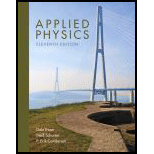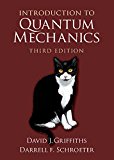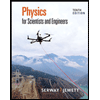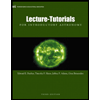
Applied Physics (11th Edition)
11th Edition
ISBN: 9780134159386
Author: Dale Ewen, Neill Schurter, Erik Gundersen
Publisher: PEARSON
expand_more
expand_more
format_list_bulleted
Textbook Question
Chapter A.4, Problem 10P
Solve each equation.
10. 65 = πr2
Expert Solution & Answer
Want to see the full answer?
Check out a sample textbook solution
Students have asked these similar questions
Please answer all attached questions. Show all calculations.
i need help to fill all 4 blanks please
Please answer #5, thanks!!! Don’t draw a FBD, not needed
Chapter A Solutions
Applied Physics (11th Edition)
Ch. A.1 - Perform the indicated operations. 1. (5)+(6)Ch. A.1 - Prob. 2PCh. A.1 - Prob. 3PCh. A.1 - (+5)+(+7)Ch. A.1 - (5)+(+3)Ch. A.1 - 0+(3)Ch. A.1 - (7)(3)Ch. A.1 - Prob. 8PCh. A.1 - (4)(+2)Ch. A.1 - Prob. 10P
Ch. A.1 - 0(+3)Ch. A.1 - 0(2)Ch. A.1 - Prob. 13PCh. A.1 - (+4)(+6)Ch. A.1 - (7)(+3)Ch. A.1 - (+5)(8)Ch. A.1 - (+6)(0)Ch. A.1 - (0)(4)Ch. A.1 - +36+12Ch. A.1 - 93Ch. A.1 - +162Ch. A.1 - Prob. 22PCh. A.1 - 0+6Ch. A.1 - 40Ch. A.1 - Prob. 25PCh. A.1 - Prob. 26PCh. A.1 - Perform the indicated operations. 27....Ch. A.1 - Perform the indicated operations. 28....Ch. A.1 - Perform the indicated operations. 29. (4)(+5)(4)Ch. A.1 - Perform the indicated operations. 30....Ch. A.1 - Perform the indicated operations. 31....Ch. A.1 - Perform the indicated operations. 32....Ch. A.1 - Perform the indicated operations. 33. (+5)+(2)(+7)Ch. A.1 - Perform the indicated operations. 34....Ch. A.1 - Perform the indicated operations. 35....Ch. A.1 - Perform the indicated operations. 36....Ch. A.1 - Perform the indicated operations. 37. (+3)(5)(+3)Ch. A.1 - Perform the indicated operations. 38....Ch. A.1 - Perform the indicated operations. 39....Ch. A.1 - Perform the indicated operations. 40....Ch. A.2 - Do as indicated. Express the results using...Ch. A.2 - Do as indicated. Express the results using...Ch. A.2 - Do as indicated. Express the results using...Ch. A.2 - Do as indicated. Express the results using...Ch. A.2 - Do as indicated. Express the results using...Ch. A.2 - Do as indicated. Express the results using...Ch. A.2 - Do as indicated. Express the results using...Ch. A.2 - Do as indicated. Express the results using...Ch. A.2 - Do as indicated. Express the results using...Ch. A.2 - Do as indicated. Express the results using...Ch. A.2 - Do as indicated. Express the results using...Ch. A.2 - Do as indicated. Express the results using...Ch. A.2 - Do as indicated. Express the results using...Ch. A.2 - Do as indicated. Express the results using...Ch. A.2 - Do as indicated. Express the results using...Ch. A.2 - Do as indicated. Express the results using...Ch. A.2 - Do as indicated. Express the results using...Ch. A.2 - Do as indicated. Express the results using...Ch. A.2 - Do as indicated. Express the results using...Ch. A.2 - Do as indicated. Express the results using...Ch. A.2 - Do as indicated. Express the results using...Ch. A.2 - Do as indicated. Express the results using...Ch. A.2 - Do as indicated. Express the results using...Ch. A.2 - Do as indicated. Express the results using...Ch. A.3 - Solve each equation. 1. 3x = 4Ch. A.3 - Solve each equation. 2. y2=10Ch. A.3 - Solve each equation. 3. x 5 = 12Ch. A.3 - Solve each equation. 4. x + 1 = 9Ch. A.3 - Solve each equation. 5. 2x + 10 = 10Ch. A.3 - Solve each equation. 6. 4x = 28Ch. A.3 - Solve each equation. 7. 2x 2 = 33Ch. A.3 - Solve each equation. 8. 4=x10Ch. A.3 - Solve each equation. 9. 172 43x = 43Ch. A.3 - Solve each equation. 10. 9x + 7 = 4Ch. A.3 - Solve each equation. 11. 6y 24 = 0Ch. A.3 - Solve each equation. 12. 3y + 15 = 75Ch. A.3 - Solve each equation. 13. 15=105yCh. A.3 - Solve each equation. 14. 6x = x 15Ch. A.3 - Solve each equation. 15. 2=502yCh. A.3 - Solve each equation. 16. 9y = 67.5Ch. A.3 - Solve each equation. 17. 8x 4 = 36Ch. A.3 - Solve each equation. 18. 10=1364xCh. A.3 - Solve each equation. 19. 2x + 22 = 75Ch. A.3 - Solve each equation. 20. 9x + 10 = x 26Ch. A.3 - Solve each equation. 21. 4x + 9 = 7x 18Ch. A.3 - Solve each equation. 22. 2x 4 = 3x +7Ch. A.3 - Solve each equation. 23. 2x + 5 = 3x 10Ch. A.3 - Solve each equation. 24. 5x + 3 = 2x 18Ch. A.3 - Solve each equation. 25. 3x + 5 = 5x 11Ch. A.3 - Solve each equation. 26. 5x + 12 = 12x 5Ch. A.3 - Solve each equation. 27. 13x + 2 = 20x 5Ch. A.3 - Solve each equation. 28. 5x + 3 = 9x 39Ch. A.3 - Solve each equation. 29. 4x + 2 = 10x 20Ch. A.3 - Solve each equation. 30. 9x + 3 = 6x +8Ch. A.3 - Solve each equation. 31. 3x + (2x 7) = 8Ch. A.3 - Solve each equation. 32. 11 (x + 12) = 100Ch. A.3 - Solve each equation. 33. 7x (13 2x) = 5Ch. A.3 - Solve each equation. 34. 20(7x 2) = 240Ch. A.3 - Solve each equation. 35. 3x + 5(x 6) = 12Ch. A.3 - Solve each equation. 36. 3(x + 117) = 201Ch. A.3 - Solve each equation. 37. 5(2x 1) = 8(x + 3)Ch. A.3 - Solve each equation. 38. 3(x + 4) = 8 3(x 2)Ch. A.3 - Solve each equation. 39. 2(3x 2) = 3x 2(5x + 1)Ch. A.3 - Solve each equation. 40. x52(2x5+1)=28Ch. A.4 - Solve each equation. 1. x2 = 36Ch. A.4 - Solve each equation. 2. y2 = 100Ch. A.4 - Solve each equation. 3. 2x2 = 98Ch. A.4 - Solve each equation. 4. 5x2 = 0.05Ch. A.4 - Solve each equation. 5. 3x2 27 = 0Ch. A.4 - Solve each equation. 6. 2y2 15 = 17Ch. A.4 - Solve each equation. 7. 10x2 + 4.9 = 11.3Ch. A.4 - Solve each equation. 8. 2(32)(4815)=v2272Ch. A.4 - Solve each equation. 9. 2(107) = 9.8t2Ch. A.4 - Solve each equation. 10. 65 = r2Ch. A.4 - Solve each equation. 11. 2.50 = r2Ch. A.4 - Solve each equation. 12. 242 = a2 + 162Ch. A.4 - Find the values of a, b, and c, in each quadratic...Ch. A.4 - Find the values of a, b, and c, in each quadratic...Ch. A.4 - Find the values of a, b, and c, in each quadratic...Ch. A.4 - Find the values of a, b, and c, in each quadratic...Ch. A.4 - Find the values of a, b, and c, in each quadratic...Ch. A.4 - Find the values of a, b, and c, in each quadratic...Ch. A.4 - Find the values of a, b, and c, in each quadratic...Ch. A.4 - Find the values of a, b, and c, in each quadratic...Ch. A.4 - Find the values of a, b, and c, in each quadratic...Ch. A.4 - Find the values of a, b, and c, in each quadratic...Ch. A.4 - Solve each quadratic equation using the quadratic...Ch. A.4 - Solve each quadratic equation using the quadratic...Ch. A.4 - Solve each quadratic equation using the quadratic...Ch. A.4 - Solve each quadratic equation using the quadratic...Ch. A.4 - Solve each quadratic equation using the quadratic...Ch. A.4 - Solve each quadratic equation using the quadratic...Ch. A.4 - Solve each quadratic equation using the quadratic...Ch. A.4 - Solve each quadratic equation using the quadratic...Ch. A.4 - Solve each quadratic equation using the quadratic...Ch. A.4 - Solve each quadratic equation using the quadratic...Ch. A.5 - Use right triangle ABC in Fig. A.11 to fill in...Ch. A.5 - Problems A.5 Use right triangle ABC in Fig. A.11...Ch. A.5 - Use right triangle ABC in Fig. A.11 to fill in...Ch. A.5 - Use right triangle ABC in Fig. A.11 to fill in...Ch. A.5 - Use right triangle ABC in Fig. A.11 to fill in...Ch. A.5 - Use right triangle ABC in Fig. A.11 to fill in...Ch. A.5 - Use right triangle ABC in Fig. A.11 to fill in...Ch. A.5 - Use right triangle ABC in Fig. A.11 to fill in...Ch. A.5 - Use right triangle ABC in Fig. A.11 to fill in...Ch. A.5 - Use right triangle ABC in Fig. A.11 to fill in...Ch. A.5 - Use a calculator to find each trigonometric ratio...Ch. A.5 - Use a calculator to find each trigonometric ratio...Ch. A.5 - Use a calculator to find each trigonometric ratio...Ch. A.5 - Use a calculator to find each trigonometric ratio...Ch. A.5 - Use a calculator to find each trigonometric ratio...Ch. A.5 - Use a calculator to find each trigonometric ratio...Ch. A.5 - Use a calculator to find each trigonometric ratio...Ch. A.5 - Use a calculator to find each trigonometric ratio...Ch. A.5 - Use a calculator to find each trigonometric ratio...Ch. A.5 - Use a calculator to find each trigonometric ratio...Ch. A.5 - Use a calculator to find each trigonometric ratio...Ch. A.5 - Use a calculator to find each trigonometric ratio...Ch. A.5 - Find each angle rounded to the nearest whole...Ch. A.5 - Find each angle rounded to the nearest whole...Ch. A.5 - Find each angle rounded to the nearest whole...Ch. A.5 - Find each angle rounded to the nearest whole...Ch. A.5 - Find each angle rounded to the nearest whole...Ch. A.5 - Find each angle rounded to the nearest whole...Ch. A.5 - Find each angle rounded to the nearest tenth of a...Ch. A.5 - Find each angle rounded to the nearest tenth of a...Ch. A.5 - Find each angle rounded to the nearest tenth of a...Ch. A.5 - Find each angle rounded to the nearest tenth of a...Ch. A.5 - Find each angle rounded to the nearest tenth of a...Ch. A.5 - Find each angle rounded to the nearest tenth of a...Ch. A.5 - Find each angle rounded to the nearest hundredth...Ch. A.5 - Find each angle rounded to the nearest hundredth...Ch. A.5 - Find each angle rounded to the nearest hundredth...Ch. A.5 - Find each angle rounded to the nearest hundredth...Ch. A.5 - Find each angle rounded to the nearest hundredth...Ch. A.5 - Find each angle rounded to the nearest hundredth...Ch. A.5 - Solve each triangle (find the missing angles and...Ch. A.5 - Solve each triangle (find the missing angles and...Ch. A.5 - Solve each triangle (find the missing angles and...Ch. A.5 - Solve each triangle (find the missing angles and...Ch. A.5 - Solve each triangle (find the missing angles and...Ch. A.5 - Solve each triangle (find the missing angles and...Ch. A.5 - Solve each triangle (find the missing angles and...Ch. A.5 - Solve each triangle (find the missing angles and...Ch. A.5 - Solve each triangle (find the missing angles and...Ch. A.5 - Solve each triangle (find the missing angles and...Ch. A.5 - Find the missing side in each right triangle using...Ch. A.5 - Find the missing side in each right triangle using...Ch. A.5 - Find the missing side in each right triangle using...Ch. A.5 - Find the missing side in each right triangle using...Ch. A.5 - Find the missing side in each right triangle using...Ch. A.5 - Find the missing side in each right triangle using...Ch. A.5 - Find the missing side in each right triangle using...Ch. A.5 - Find the missing side in each right triangle using...Ch. A.6 - Express the lengths of sides to three significant...Ch. A.6 - Express the lengths of sides to three significant...Ch. A.6 - Express the lengths of sides to three significant...Ch. A.6 - Express the lengths of sides to three significant...Ch. A.6 - Express the lengths of sides to three significant...Ch. A.6 - Express the lengths of sides to three significant...Ch. A.6 - Express the lengths of sides to three significant...Ch. A.6 - Express the lengths of sides to three significant...Ch. A.6 - Express the lengths of sides to four significant...Ch. A.6 - Express the lengths of sides to four significant...Ch. A.6 - Express the lengths of sides to four significant...Ch. A.6 - Express the lengths of sides to four significant...Ch. A.6 - Express the lengths of sides to two significant...Ch. A.6 - Express the lengths of sides to two significant...Ch. A.6 - Express the lengths of sides to two significant...Ch. A.6 - Express the lengths of sides to two significant...Ch. A.6 - For each general triangle, (a) determine the...Ch. A.6 - For each general triangle, (a) determine the...Ch. A.6 - For each general triangle, (a) determine the...Ch. A.6 - For each general triangle, (a) determine the...Ch. A.6 - For each general triangle, (a) determine the...Ch. A.6 - For each general triangle, (a) determine the...Ch. A.6 - For each general triangle, (a) determine the...Ch. A.6 - For each general triangle, (a) determine the...Ch. A.6 - Express the lengths of sides to two significant...Ch. A.6 - Express the lengths of sides to two significant...Ch. A.6 - Express the lengths of sides to two significant...Ch. A.6 - Express the lengths of sides to two significant...Ch. A.6 - Express the lengths of sides to two significant...Ch. A.6 - Express the lengths of sides to two significant...Ch. A.6 - Express the lengths of sides to four significant...Ch. A.6 - Express the lengths of sides to four significant...Ch. A.6 - Express the lengths of sides to four significant...Ch. A.6 - Express the lengths of sides to four significant...Ch. A.6 - Express the lengths of sides to four significant...Ch. A.6 - Express the lengths of sides to four significant...Ch. A.6 - Express the lengths of sides to three significant...Ch. A.6 - Express the lengths of sides to three significant...Ch. A.6 - Express the lengths of sides to three significant...Ch. A.6 - Express the lengths of sides to three significant...Ch. A.6 - Express the lengths of sides to three significant...Ch. A.6 - Express the lengths of sides to three significant...Ch. A.6 - Express the lengths of sides to three significant...Ch. A.6 - Express the lengths of sides to three significant...Ch. A.6 - Express the lengths of sides to three significant...Ch. A.6 - Express the lengths of sides to two significant...Ch. A.6 - Express the lengths of sides to two significant...Ch. A.6 - Express the lengths of sides to two significant...Ch. A.6 - Express the lengths of sides to two significant...Ch. A.6 - Express the lengths of sides to two significant...Ch. A.6 - Express the lengths of sides to four significant...Ch. A.6 - Express the lengths of sides to four significant...Ch. A.6 - Express the lengths of sides to four significant...Ch. A.6 - Express the lengths of sides to four significant...Ch. A.6 - Express the lengths of sides to four significant...Ch. A.6 - Express the lengths of sides to four significant...
Additional Science Textbook Solutions
Find more solutions based on key concepts
Calculate the average volume per molecule for an ideal gas at room temperature and atmospheric pressure. Then t...
An Introduction to Thermal Physics
Earth takes 365.25 days to revolve around the Sun. If Earth take this same amount or time to spin about its axi...
Conceptual Integrated Science
3. What is free-fall, and why does it make you weightless? Briefly describe why astronauts are weightless in th...
The Cosmic Perspective
How many of the planets orbit the Sun in the same direction that Earth does? (a) a few (b) most (c) all
Life in the Universe (4th Edition)
99. In tearing a paper towel or plastic bag from a roll, discuss why a sharp jerk is more effective than a show...
Conceptual Physical Science (6th Edition)
You can run 9.0 m/s, 20% faster than your brother. How much head start should you give him in order to have a t...
Essential University Physics (3rd Edition)
Knowledge Booster
Learn more about
Need a deep-dive on the concept behind this application? Look no further. Learn more about this topic, physics and related others by exploring similar questions and additional content below.Similar questions
arrow_back_ios
arrow_forward_ios
Recommended textbooks for you
 College PhysicsPhysicsISBN:9781305952300Author:Raymond A. Serway, Chris VuillePublisher:Cengage Learning
College PhysicsPhysicsISBN:9781305952300Author:Raymond A. Serway, Chris VuillePublisher:Cengage Learning University Physics (14th Edition)PhysicsISBN:9780133969290Author:Hugh D. Young, Roger A. FreedmanPublisher:PEARSON
University Physics (14th Edition)PhysicsISBN:9780133969290Author:Hugh D. Young, Roger A. FreedmanPublisher:PEARSON Introduction To Quantum MechanicsPhysicsISBN:9781107189638Author:Griffiths, David J., Schroeter, Darrell F.Publisher:Cambridge University Press
Introduction To Quantum MechanicsPhysicsISBN:9781107189638Author:Griffiths, David J., Schroeter, Darrell F.Publisher:Cambridge University Press Physics for Scientists and EngineersPhysicsISBN:9781337553278Author:Raymond A. Serway, John W. JewettPublisher:Cengage Learning
Physics for Scientists and EngineersPhysicsISBN:9781337553278Author:Raymond A. Serway, John W. JewettPublisher:Cengage Learning Lecture- Tutorials for Introductory AstronomyPhysicsISBN:9780321820464Author:Edward E. Prather, Tim P. Slater, Jeff P. Adams, Gina BrissendenPublisher:Addison-Wesley
Lecture- Tutorials for Introductory AstronomyPhysicsISBN:9780321820464Author:Edward E. Prather, Tim P. Slater, Jeff P. Adams, Gina BrissendenPublisher:Addison-Wesley College Physics: A Strategic Approach (4th Editio...PhysicsISBN:9780134609034Author:Randall D. Knight (Professor Emeritus), Brian Jones, Stuart FieldPublisher:PEARSON
College Physics: A Strategic Approach (4th Editio...PhysicsISBN:9780134609034Author:Randall D. Knight (Professor Emeritus), Brian Jones, Stuart FieldPublisher:PEARSON

College Physics
Physics
ISBN:9781305952300
Author:Raymond A. Serway, Chris Vuille
Publisher:Cengage Learning

University Physics (14th Edition)
Physics
ISBN:9780133969290
Author:Hugh D. Young, Roger A. Freedman
Publisher:PEARSON

Introduction To Quantum Mechanics
Physics
ISBN:9781107189638
Author:Griffiths, David J., Schroeter, Darrell F.
Publisher:Cambridge University Press

Physics for Scientists and Engineers
Physics
ISBN:9781337553278
Author:Raymond A. Serway, John W. Jewett
Publisher:Cengage Learning

Lecture- Tutorials for Introductory Astronomy
Physics
ISBN:9780321820464
Author:Edward E. Prather, Tim P. Slater, Jeff P. Adams, Gina Brissenden
Publisher:Addison-Wesley

College Physics: A Strategic Approach (4th Editio...
Physics
ISBN:9780134609034
Author:Randall D. Knight (Professor Emeritus), Brian Jones, Stuart Field
Publisher:PEARSON
GCSE Physics - Vector Diagrams and Resultant Forces #43; Author: Cognito;https://www.youtube.com/watch?v=U8z8WFhOQ_Y;License: Standard YouTube License, CC-BY
TeachNext | CBSE Grade 10 | Maths | Heights and Distances; Author: Next Education India;https://www.youtube.com/watch?v=b_qm-1jHUO4;License: Standard Youtube License